Introduction, Happiness & Control
Is this all you want from your life?
This is a question I first asked myself many years ago. Since then I’ve had moments where I believed money, a great relationship and a lot of free time would make me happy. All those things do… but research about happiness now shows those factors are not that important.
In fact, only 10% of our happiness comes from these factors which are our life circumstances. 50% of our happiness is determined by genetic factors: some people simply feel happy more easily than others. But there is nothing we can do about this. You can’t influence your genetics.
So there is 40% left. What is this 40% that can make the difference between feeling happy or miserable? That 40% is how we think, feel and act in all the hundreds of little situations that we encounter every day. It is simply your everyday life.
So genetics matter a lot, but you can’t influence them. Your life circumstances matter a little. But the biggest factor you yourself control is the way you think, act and feel every day.
Think about it like this. To control a car you have to know where the brake is, the gas pedal and some other things that you need to drive it. Your have to understand how cars work before you can control them. Similarly, to control your thoughts, emotions and actions, you first have to understand how your mind works.
If you look through psychological studies and studies from related scientific fields you will find that this is the way to happiness.
In numerous scientific studies about happiness, people who felt less helpless and more in control over their lives were those who experienced the greatest happiness.
But to be honest reading psychological studies and research journals can be pretty boring.
So I was thinking: how can I reach as many people as possible and help them to live happier and more fulfilled lives by showing them how their mind works in a simple and fun way?
That’s when I had the idea to create this free Psychology Essentials course in which you learn all you need to know to get more control over your life, and as a result feel more happiness. Feel free to share this with your family and friends. Everyone can benefit from this. More people that know how their mind works means more happy people and that is what this is all about.
Alright, ready to learn some amazing psychological concepts that will literally blow your mind?, and all of them wrapped into fun and easily digestible stories that you can read, listen to or watch as videos?
Let’s begin.
Let me introduce you to one of the most fundamental and important psychological discoveries ever made: how thoughts and emotions are connected and influence everything we do.
Understanding just this is pretty powerful.
Lets start this off with a little story.
Kurt’s Life, ABC Model
This story is about the life of Kurt. Kurt is a really nice guy. He is 30 years old, works as an art director in a medium sized advertising agency. Besides that – he is just a bit of a loner and weird guy but his life is good. If only it weren’t for one problem. His house is infested with aliens!!!
And those aliens they have a mission. The mission is to learn about humans because they are afraid of what they don’t understand and want to destroy it. In this regard they are very much like humans. But it turns out the aliens in Kurt’s house are actually pretty nice guys. They want to learn about humans and report back to the huge mothership secretly orbiting the earth right now and prevent the other aliens from destroying the planet.
But what if what they learned about humans was so negative their commanders felt it made no sense to keep humans around? The human race would still be destroyed.
So they must understand humans and also find ways to help them become better and stop destroying the planet and each other. Only then would the alien high council decide it was worth keeping them.
It is a race against time. They have to understand and improve humans in just a few days to prevent the alien commanders from laying waste to the whole planet.
So the aliens landed and made Kurt’s house their operating base and explained everything to him. He knew he had to help these guys or mankind was doomed. The aliens started with their research right away.
They gave Kurt special glasses that could read and record what was going on in his mind. As soon as Kurt put on these glasses the head researcher Doctor Hum grabbed a huge hammer and smashed it into Kurt’s TV screen.
All the while a big A flashed on one of the researchers’ computer screens. It took Kurt a few moments to realize what he was seeing. “Oh no! My TV is destroyed! I wont be able to watch my favorite shows anymore!”
Right after these thoughts shot through his brain a B flashed on the researchers computer screen.
Doc Hum was still smashing the TV to bits and Kurt grew angry. A big C flashed on the computer screens.
He was about to shout at Doc Hum to stop when all the alien researchers around him started to cheer. That made the situation even more bizarre.
Doc Hum quickly apologized and explained that this was part of the experiment to understand how humans think. He took Kurt’s arm and pulled him over to a screen to show him the research findings. Kurt just couldn’t believe all this was really happening but followed along.
Doc Hum explained they had just witnessed the ABC model in action. This is a model that describes how humans think and was created by a psychologist named Albert Ellis.
It all starts with A: the activating event. This can be anything. Anything people see, feel or hear. Pretty much anything that gets the ball rolling. In this case…
The activating event was when Doc Hum started to smash Kurt’s TV.
Right away, thoughts of how bad this was shot through Kurt’s brain, and then the big B flashed on those computer screens. In the ABC model B describes beliefs and thoughts that result from A the activating event. So as he watched the Alien destroy his TV, the thought that he would not be able to watch his favorite shows flashed through Kurt’s brain.
These thoughts triggered C which are the consequences. They are emotions and reactions.
Kurt got angry and was about to shout at Doc Hum that he should stop doing this!
Ok, so that’s the ABC model that explains how humans think.
A: An activating event
followed by
B: Beliefs and thoughts
followed by
C: Consequences which are emotions and actions
Kurt understood the idea, but not really why it mattered… and why they had to test it like that. Doc Hum apologized and started to fiddle with the TV like he was trying to repair it.
Kurt sighed and just asked if this model would always apply to human thinking. He felt like he had become angry right away without thinking at all.
Doc Hum explained. Sometimes the beliefs and thoughts come so fast that humans are barely or not at all aware of them. In this case these thoughts are called automatic thoughts and humans feel like an activating event is followed by an emotion or reaction right away.
Martial artists train for that. They repeat the same movements over and over so that when they fight they react automatically, without really thinking..
That made sense to Kurt. He told Doc Hum this happened when he saw a spider and got scared right away. Doc Hum just nodded and started to smile. He asked: “Do you actually understand how powerful this is?”
Kurt didn’t know what to say and Doc Hum continued. “If all humans would understand this and be able to control their thoughts and automatic thoughts they could control their emotions and reactions in all sorts of different situations. That would make this world a way better place.”
Kurt just nodded. He had worked all day and was a bit shaken up by having to deal with aliens and their very unique ways of doing research. He excused himself and went upstairs to go to bed. Somehow he couldn’t sleep right away and opened his window and a cool breeze started to flow through his room. It was a beautiful summer night and he stared into the clear night sky and things started to make sense.
If people could understand that there would always be these thoughts before their emotions and reactions, they could learn to control their thoughts and so many misunderstandings and so many feelings of anger, frustration and sadness could be avoided. This would truly change the world for the better. This would also make all those humans who know this more relaxed and happier and give them a feeling of having more control over their life.
That was what Doc Hum meant about how powerful this is.
When Kurt started to feel tired he had this warm feeling of satisfaction that what he had done was right. He just tried to avoid thinking about the big weird smile of Doc Hum who had already announced some “fantastic” experiments for tomorrow.
Review
Alright, in this story you got to know the ABC model that shows how humans think. Let’s talk about this a little bit.
Why is this so important? Because if you have control over your thoughts, you have control over your behavior and emotions; and with that you have more control over your life. People with more control over their life feel happier and less helpless.
That’s the basic idea.
Let’s have a look at another graphic illustrating the whole process of thinking, feeling and reacting that we run through several times every day.
The input here is anything that gets the ball rolling. In the ABC model it’s called the activating event. This is always followed by Beliefs & Thoughts, some of them happening so quickly we are at best barely aware of them. In this case they are automatic thoughts. But these beliefs & thoughts are inevitable, and that is crucial to keep in mind.
And as a result of these thoughts, you feel how you feel and you act how you act. That’s the output.
Various self-help techniques and psychological therapies try to alter the path from input to output. Here are some common ones.
Some deal simply with managing the mess. Basically you just learn how to deal with these bad feelings and how to stay under control. This is useful, and there I nothing is wrong with that. But how about not having these bad feelings at all? Sounds better? It is!
Some techniques like positive thinking try to get you to that point. Basically, you try to replace negative thoughts with positive ones. That’s great too! But to replace these thoughts, you have to be aware of them in the first place, which means you are still helpless when you are at the mercy of automatic thoughts.
What you learn here goes that critical step further, and goes pretty much to the limits of modern psychology and cutting-edge neuroscientific research. You not only learn to change your thoughts, but also your automatic thoughts, and this is crucial. You learn how to identify activating events that trigger certain thoughts, how to become aware of automatic thoughts, and then, how to change them.
Because you can stop negative emotions before they even come up, you learn how to avoid getting stressed, angry, sad or depressed. Thats what you can learn here like thousands of other people before who learned this and were able to live happier lifes. If you look for a shortcut to happiness this is as good as it gets.
Just fill out the form next to the video to stay up to date and get new lessons along with our three extra lessons about motivation, creating habits and goal-setting.
In the next lesson we will have a look at different states of mind we humans have and how to get one step closer to become aware of those elusive automatic thoughts.
[su]

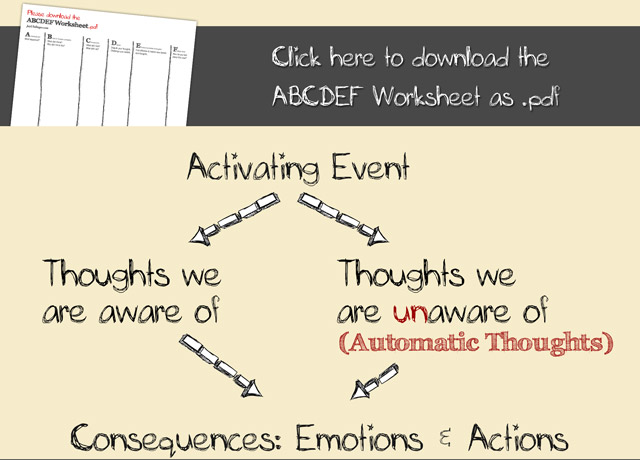
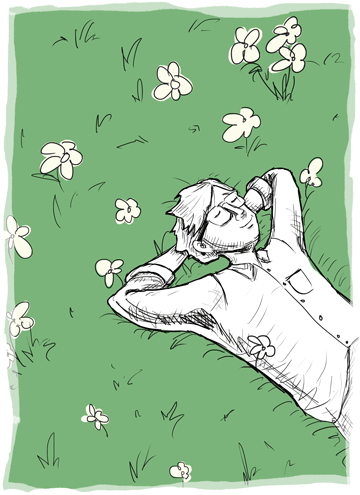 Do you know those times when there is so much on your mind you can’t stop thinking? Thoughts or worries bubble up non-stop and after a while you become exhausted, worried or stressed.
Do you know those times when there is so much on your mind you can’t stop thinking? Thoughts or worries bubble up non-stop and after a while you become exhausted, worried or stressed.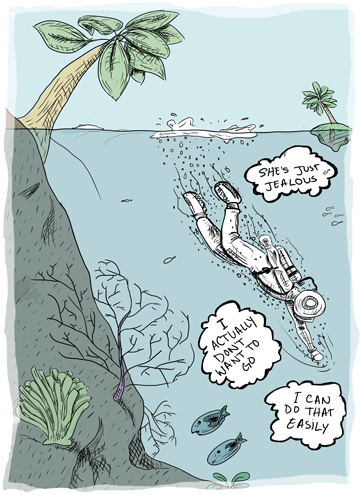 Much of our daily thinking occurs in an area of our mind that is closed for many of us, the unconscious part of our mind.
Much of our daily thinking occurs in an area of our mind that is closed for many of us, the unconscious part of our mind.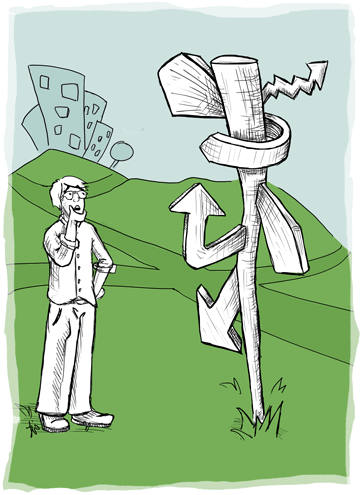 Think of your decision-making like this: In every area of your life you have a goal or something you want to achieve. For example you might want to be successful, get a promotion and double your current salary by the end of the year — or you might simply want to kill your neighbour’s noisy dog (but don’t!).
Think of your decision-making like this: In every area of your life you have a goal or something you want to achieve. For example you might want to be successful, get a promotion and double your current salary by the end of the year — or you might simply want to kill your neighbour’s noisy dog (but don’t!).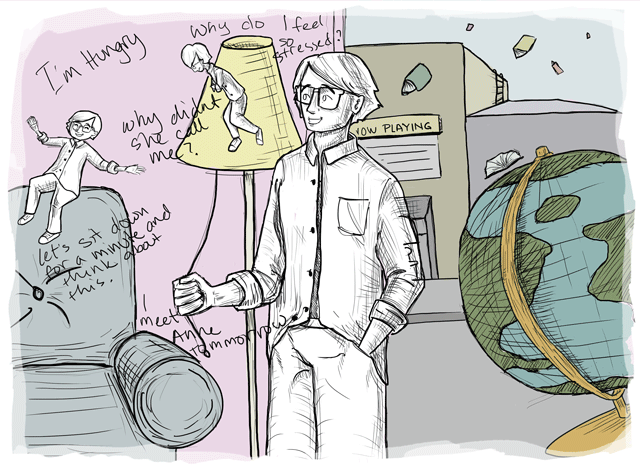 Some people might be good at being compassionate, while others might excel in hating their neighbours with passion. Leaving out the good and bad in this, everyone has areas in which they are better than others.
Some people might be good at being compassionate, while others might excel in hating their neighbours with passion. Leaving out the good and bad in this, everyone has areas in which they are better than others.